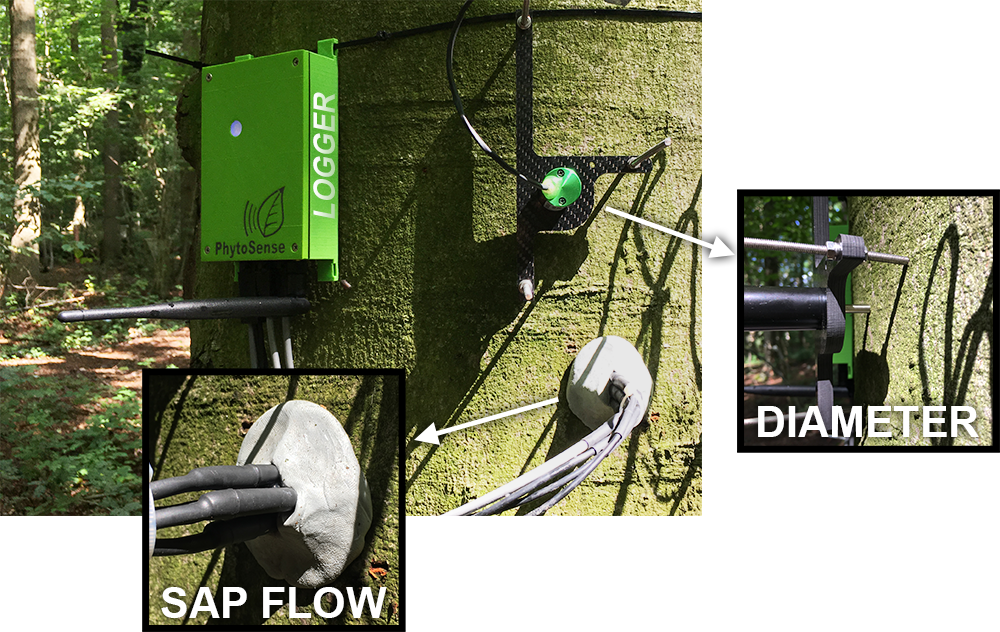Experimental forest 'Aelmoeseneie'
« Common beech »
Five beech (Fagus sylvatica L.) trees are being monitored continuously in the experimental forest of Aelmoeseneie. The data shown is the dynamica chart below is collected from the beech tree located closest to the measuring tower which is clearly visible on the satellite image below. It is one of the longest monitored trees in this forest and is currently equipped with the following sensors:
- • Sap flow: SapFlow+ sensor (Laboratory of Plant Ecology, Ghent University)
- • Over-bark stem diameter variation: point dendrometer LPS-ZN11 (Natkon)
- • Xylem diameter variation: point dendrometer LPS-ZN11 (Natkon)
- • Soil water potential: tensiometer SWT4 (Delta-T Devices)
- • Relative humidity and air temperature: SHT25 (Sensirion)

Beech is native to temperature Europe, Asia and North America but only reached North-West Europe long after the ice age (ca. 2000 B.C.). It can reach heights of up to 40 m and an age of 200-300 year. Beech has a thin (1-2 mm), smooth and gray bark which is very sensitive to 'sun burn'. Flowers from April till May, around the same time that the leaves appear. Its fruits (beechnuts) are edible. Beech grows well in aerated, moist, calcareous and loamy soils. It can not tolerate high groundwater levels and poor sandy soils. Beech is a shade-tolerant climax species and is very competitive with oak (Quercus robur L.).
Tree data
The dynamic chart below displays sap flow and diameter variation measurements in real time. Using the 'zoom' buttons it is possible to select a different time range. A specific time range can also be defined. Furthermore data ranges can be selected by simple clicking and dragging your cursor along the chart horizontally.
